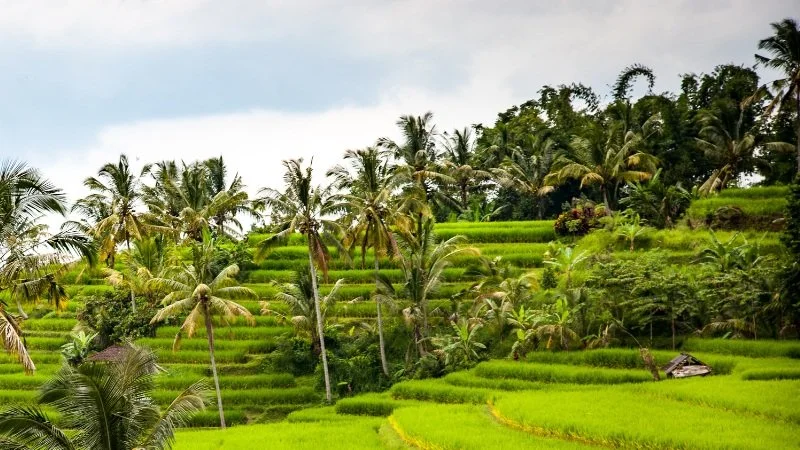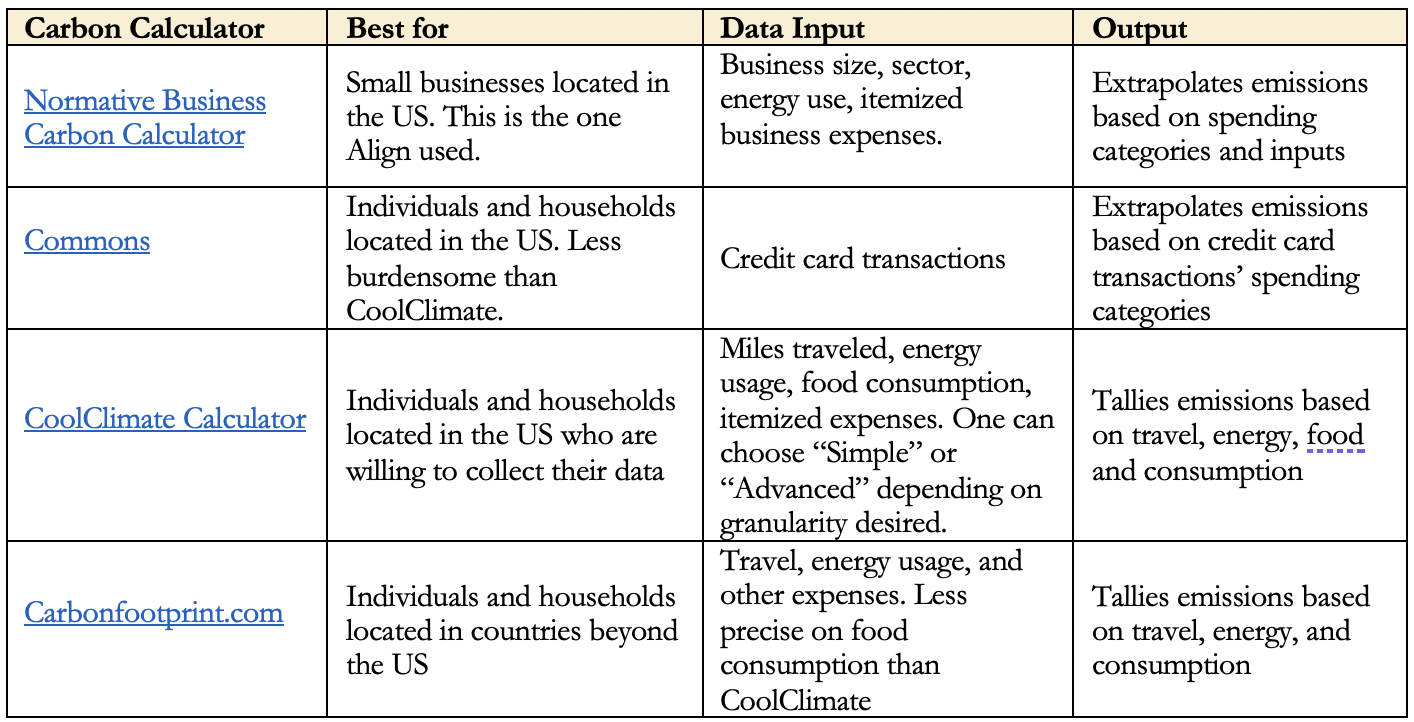Align Went Net Zero; Here’s How You Can Too
Current 7 - Insights:
Every year, Align calculates its carbon footprint and offsets its emissions to ensure we walk our talk and remain a net zero company. That means that for every ton of greenhouse gas we emit through our travel and operations, we fund a project that avoids or sequesters a ton of greenhouse gas, equating to a net balance of zero emissions. To preface this discussion, note that best practice is to reduce emissions as much as possible before offsetting what remains. Reducing travel and consumption to only the essential will go a long way in bringing down the carbon footprint before turning to offsetting.
Are you interested in offsetting your company’s or your own individual hard-to-abate emissions? We’ll leave a trail of our work to offer a blueprint for anyone looking to go net zero themselves.
Calculate your emissions
Choosing a carbon calculator to tally your emissions is an exercise in balancing scope, precision of methodology, and user-friendliness. No carbon calculator is perfect, and results will vary based on various factors. Nevertheless, it’s more important to get a directional estimate of your emissions than a precise reading. These are some recommended carbon calculators[1] that are all free and include Scope 1, 2 and 3.[2]
Align’s emissions for 2022 were 103 tons. About 24% of those emissions were from the heat and electricity used in our office spaces (Scope 2). A much larger portion came from our business travel and our supply chain, primarily our tech stack (Scope 3). We didn’t have any Scope 1 emissions.
2. Select a Project
Once you know your carbon footprint, it’s time to select how to offset that footprint. Carbon marketplaces connect individuals and companies seeking to offset their emissions with verified projects that are avoiding or reducing carbon. At Align, we utilize the Pachama platform for our offsets because we value the additionality of their forest conservation projects, the rigor of their verification process, the use of satellite and AI technology to monitor projects, and the transparency into projects’ evaluation materials.
This year, Align chose to offset our 2022 emissions with a Pachama project in Borneo, Indonesia.. The project aims to halt the planned deforestation of a precious peat swamp forest known for its high biodiversity and carbon sequestration capabilities. This forest was under the imminent threat of being turned into an industrial timber plantation, which would have released substantial amounts of carbon, disrupted local forest-based economies, and devastated the region's biodiversity. The project area is home to a remarkable 5% of the world's remaining populations of endangered species like Orangutans and Bornean Gibbons, earning it the designation of a Key Biodiversity Area. To safeguard and revitalize this essential ecosystem, the project obtained legal control of the land to prevent its conversion to an acacia plantation. Additionally, it will closely collaborate with local communities through educational initiatives, thorough monitoring practices, and funding for alternative livelihoods. To that end, the team partnered with 34 local villages to support and strengthen their time-honored livelihood practices, including farming, fishing, agroforestry, and the sustainable collection of non-timber forest resources.
In selecting your project, we recommend the Pachama platform for the reasons previously mentioned. We expect projects on that site to be of high quality and verified. If utilizing another platform, be sure to confirm the project was verified by Verified Carbon Standard or Gold Standard to ensure conformity with offset standards, that the level of additionality is high, and that the emissions reductions are permanent. You may consider a nature-based solution over other types of projects, as carbon credits are one of the few ways of financing nature, whereas technology and energy typically have other revenue streams. An additional consideration would be to seek out projects with co-benefits supporting local communities.




